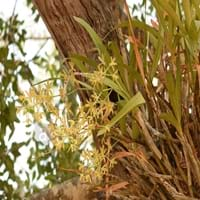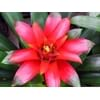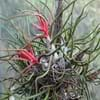Life Span
Perennial
Annual and Biennials
Origin
Europe, Eastern Europe, Northern Europe, Southern Europe, Western Europe, United Kingdom, Russia/Siberia, Mediterranean, Turkey, Northern Africa, Central Asia, Eastern Asia, Western Asia, India, Nepal, China, Japan, Korea
Africa, Middle Africa
Types
Bigleaf hydrangea, Hortensia, Smooth hydrangea, Oakleaf hydrangea, Annabelle
Not available
Number of Varieties
Not Available
Habitat
Forest edges, Hillside, Woods
Subtropical climates, subtropical regions, tropical grasslands, Tropical regions
USDA Hardiness Zone
5-9
9-14
Sunset Zone
Not Available
H1, H2, 20, 21, 22, 23, 24
Habit
Weeping
Clump-Forming
Flower Color
Yellow green
Yellow, Light Yellow, Lemon yellow, Gold, Bronze, Brown, Sienna
Flower Color Modifier
Not Available
Bicolor
Fruit Color
Not Available
Yellow Brown
Leaf Color in Spring
Light Green, Yellow green
Green
Leaf Color in Summer
Green, Yellow green
Green
Leaf Color in Fall
Green, Yellow green
Green
Leaf Color in Winter
Olive, Yellow green
Green, Gray Green
Leaf Shape
Oblovate
Narrow
Plant Season
Spring, Summer, Fall, Winter
Spring, Summer
Sunlight
Full Sun, Partial Sun
Partial Sun, Partial shade
Type of Soil
Not Available
Not Available
The pH of Soil
Not Available
Not Available
Soil Drainage
Not Available
Well drained
Bloom Time
Early Spring, Spring, Late Winter
Late Spring, Early Summer, Summer
Tolerances
Not Available
Not Available
Where to Plant?
Container, Ground
Container, Ground, Pot
How to Plant?
Seedlings, Stem Planting
Cuttings, Seedlings
Plant Maintenance
Medium
Medium
Watering Requirements
Not Available
Average Water Needs, Do Not over Water
In Summer
Average Water
Lots of watering
In Spring
Moderate
Moderate
In Winter
Average Water
Average Water
Soil pH
Not Available
Not Available
Soil Type
Not Available
Not Available
Soil Drainage Capacity
Not Available
Well drained
Sun Exposure
Full Sun, Partial Sun
Partial Sun, Partial shade
Pruning
Remove damaged leaves, Remove dead branches, Remove dead leaves
Remove damaged leaves, Remove dead branches, Remove dead leaves
Fertilizers
All-Purpose Liquid Fertilizer
All-Purpose Liquid Fertilizer
Pests and Diseases
Red blotch
Armored scales, Mealy bugs, Spider mites
Plant Tolerance
Not Available
Drought
Flowers
Insignificant
Showy
Flower Petal Number
Single
Single
Foliage Texture
Medium
Coarse
Foliage Sheen
Matte
Matte
Attracts
Birds
Not Available
Allergy
Chest tightness, Diarrhea, Dizziness, Nausea, Vomiting
contact allergic dermatitis
Aesthetic Uses
Not Available
Not Used For Aesthetic Purpose
Beauty Benefits
Not Available
Not Available
Edible Uses
Not Available
No
Environmental Uses
Air purification
Air purification
Medicinal Uses
Fever, Kidney problems, Urinary tract problems
Aphrodisiac, Diarrhea
Part of Plant Used
Flowers, Root
Bulbs, Flowers, Leaves, Stem
Other Uses
Not Available
Unknown
Used As Indoor Plant
Not Available
No
Used As Outdoor Plant
Yes
Yes
Garden Design
Not Available
Container, Cutflower, Houseplant, Mixed Border, Tropical
Botanical Name
VISCUM album
ANSELLIA africana
Common Name
European Mistletoe
African Ansellia, Leopard Orchid
In Hindi
Hydrangea
Ansellia
In German
Hortensie
Ansellia
In French
Hortensia
léopard orchidée
In Spanish
Hortensia
orchidée léopard
In Greek
υδραγεία
Ansellia
In Portuguese
Hortênsia
Ansellia
In Polish
Hortensja
Ansellia
In Latin
Hibiscus
Ansellia
Phylum
Not Available
Tracheophyta
Class
Not Available
Liliopsida
Order
Not Available
Asparagales
Family
Viscaceae
Orchidaceae
Genus
Not Available
Ansellia
Clade
Not Available
Angiosperms, Monocots
Tribe
Not Available
Cymbidieae
Subfamily
Not Available
Epidendroideae
Number of Species
Not Available
Importance of European Mistletoe and Leopard Orchid
Want to have the most appropriate plant for your garden? You might want to know the importance of European Mistletoe and Leopard Orchid. Basically, these two plants vary in many aspects. Compare European Mistletoe and Leopard Orchid as they differ in many characteristics such as their life, care, benefits, facts, etc. Every gardener must at least have the slightest clue about the plants he wants to plant in his garden. Compare their benefits, which differ in many ways like facts and uses. The medicinal use of European Mistletoe is Fever, Kidney problems and Urinary tract problems whereas of Leopard Orchid is Aphrodisiac and Diarrhea. European Mistletoe has beauty benefits as follows: Not Available while Leopard Orchid has beauty benefits as follows: Not Available.
Compare Facts of European Mistletoe vs Leopard Orchid
How to choose the best garden plant for your garden depending upon its facts? Here garden plant comparison will help you to solve this query. Compare the facts of European Mistletoe vs Leopard Orchid and know which one to choose. As garden plants have benefits and other uses, allergy is also a major drawback of plants for some people. Allergic reactions of European Mistletoe are Chest tightness, Diarrhea, Dizziness, Nausea and Vomiting whereas of Leopard Orchid have contact allergic dermatitis respectively. Having a fruit bearing plant in your garden can be a plus point of your garden. European Mistletoe has showy fruits and Leopard Orchid has no showy fruits. Also European Mistletoe is not flowering and Leopard Orchid is not flowering . You can compare European Mistletoe and Leopard Orchid facts and facts of other plants too.




